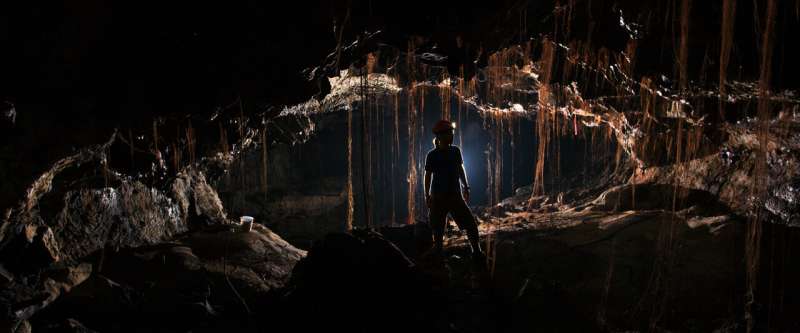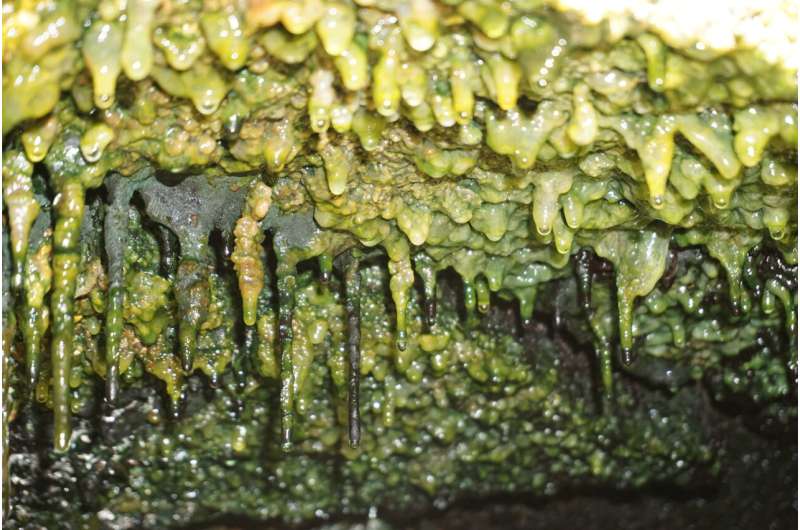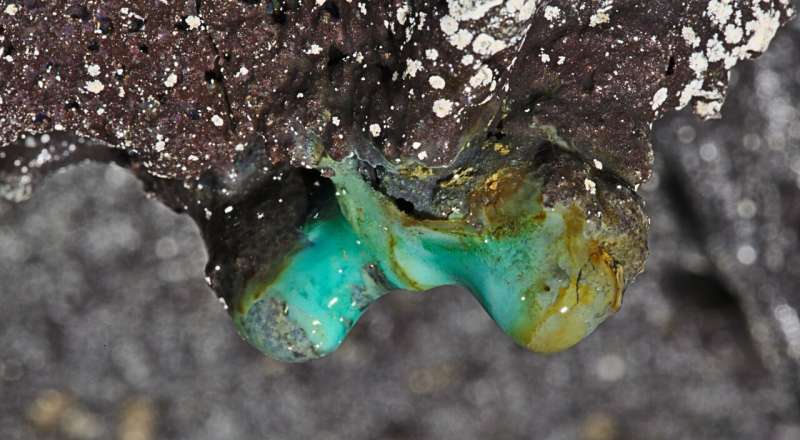Microbial 'dark matter': Centuries-old lava caves of Hawaiʻi Island contain thousands of unknown bacterial species

The lava caves, lava tubes and geothermal vents on the big island of Hawaiʻi have higher bacterial diversity than scientists expected, reports a new study in Frontiers in Microbiology. These habitats represent how life might have existed on Mars and early Earth in the past, and this study explores the diversity and interactions within these microbial ecosystems.
Surprisingly, the results revealed that a group of bacteria called Chloroflexi are often "hub" species, meaning that they are connected with many other species and usually play key ecological roles in the community. Little is known about many Chloroflexi species and further study will reveal previously undiscovered species, as well as what role these species play in these extreme environments.
"This study points to the possibility that more ancient lineages of bacteria, like the phylum Chloroflexi, may have important ecological 'jobs,' or roles," said first author Dr. Rebecca D Prescott of NASA Johnson Space Center and University of Hawaiʻi at Mānoa, in the US.
"The Chloroflexi are an extremely diverse group of bacteria, with lots of different roles found in lots of different environments, but they are not well studied and so we don't know what they do in these communities. Some scientists call such groups 'microbial dark matter'—the unseen or un-studied microorganisms in nature."
Unseen volcanic life
To have an idea of how the bacterial communities might develop over time, Prescott and her collaborators collected 70 samples from varied sites including active geothermal vents (fumaroles), as well as "younger" and "older" lava tubes and caves, which were under 400 years old and between 500 to 800 years old, respectively. By sequencing the ribosomal RNA in the samples, they could measure the diversity and abundance of the bacterial classes in each sample. The networks formed by co-occurring bacteria also gave clues about how these microbes may interact with each other.

The research team had expected that the harshest conditions—the geothermal sites—might have lower diversity than the more established and habitable lava tubes. While it was true that the diversity was lower, the team was surprised to see that the interactions within these communities were more complex than in locations with higher diversity.
"This leads to the question, do extreme environments help create more interactive microbial communities, with microorganisms more dependent on each other?" said Prescott. "And if so, what is it about extreme environments that helps to create this?"
Since Chloroflexi, and another class called Acidobacteria, were present at nearly all of the locations, they may play important roles in these communities. But these were not the most abundant bacteria, and the individual communities from the different sites showed large variation in the diversity and complexity of the microbial interactions. Counterintuitively, the most abundant groups, Oxyphotobacteria and Actinobacteria, were not often "hub" species, suggesting that their roles may be less important to the overall structure of the community.

More questions than answers
The current study, based on the partial sequencing of one gene, cannot accurately determine the species of microbes or their "jobs" in the community. Therefore, further studies are needed to help reveal the individual species that are present, as well as to better understand these bacteria's roles in the environment.
"Overall, this study helps to illustrate how important it is to study microbes in co-culture, rather than growing them alone (as isolates)," said Prescott. "In the natural world, microbes do not grow in isolation. Instead, they grow, live and interact with many other microorganisms in a sea of chemical signals from those other microbes. This then can alter their gene expression, affecting what their jobs are in the community."
Beyond the insights about past, or even future, life on Mars, bacteria from volcanic environments can also be useful in understanding how microbes turn volcanic rock (basalt) into soils, as well as bioremediation, biotechnology and sustainable resource management.
More information: Rebecca D. Prescott et al, Islands Within Islands: Bacterial Phylogenetic Structure and Consortia in Hawaiian Lava Caves and Fumaroles, Frontiers in Microbiology (2022). DOI: 10.3389/fmicb.2022.934708
Journal information: Frontiers in Microbiology
Provided by Frontiers




















